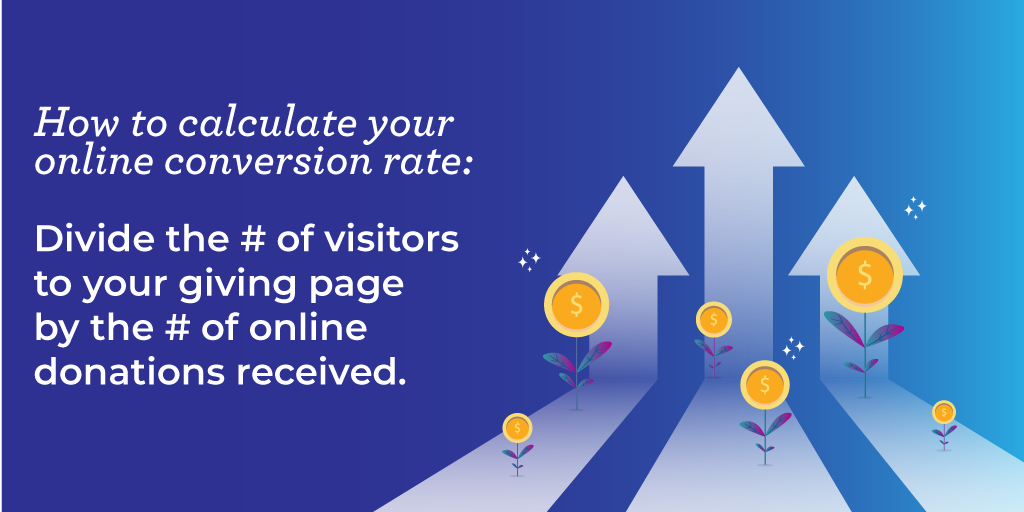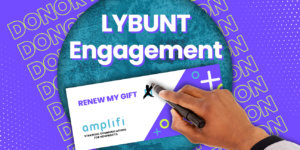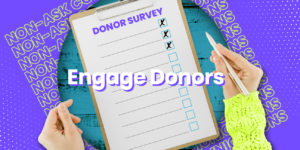As a fundraiser, I’m sure you’ve had this experience. You come up with a great new way for your organization to raise more money. Then, you pitch your plan to your nonprofit’s leadership and they undoubtedly ask, what’s the potential ROI?
Of course, your nonprofit’s leadership has their eye on the bottom line. But they sometimes struggle to see beyond ROI.
And any effective strategy should have potential for a positive return. But that’s not the only metric you should consider when evaluating a fundraising strategy!
Donor retention, response, conversion rates, and average gift size are all important metrics for evaluating your fundraising effectiveness. These data-points go beyond ROI and can tell you if your strategies, including personalized ask strings, are effective.

1. Average Gift Size
What is the average size donation you receive and how has it changed over time?
This is an important metric when thinking beyond ROI. And it can tell you a lot about how your donor base is growing and if you are using effective personalized ask strings.
Your average gift size should grow overtime.
But if it’s not, look at how your donors respond to your personalized asks. If they consistently choose the option at the low-end of your ask string, you’re probably being too aggressive.
So, let’s take a look at your current ask strategy. A common ask string goes something like this:
-
- ASK 1 = Last Gift
- ASK 2 = 1.5x Last Gift
- ASK 3 – 2x Last Gift
This approach subtly encourages donors to give more than they did last time. However, if the donor’s last gift was 3 years ago, you might want to be softer. Or, if you find too many donors are choosing ASK 1 (or lower), use a less aggressive ask string such as:
-
- ASK 1 = Last Gift
- ASK 2 = 1.25x Last Gift
- ASK 3 = 1.5x Last Gift
Then, couple your ask string with messages about the impact a slight increase in gift size will have on your goals and keep track of how donors respond. Then, you can return to a more aggressive approach for donors who chose to give at the high end of this ask string.

2. Donor Retention
There is probably something wrong with your communications strategy if you are struggling to retain donors. Does a lot of your support come from one-time donors, who don’t make a second gift?
If so, you need to take steps to earn long-term support. And long-term fundraising success relies on building relationships with donors.
But a poor donor retention rate is a sure sign that you’re not doing enough to make your donors feel like a valuable part of your organization!
So, if you’re struggling to retain donors, start by examining how you communicate after they give.
Do you send an automated, generic thank you and then drop all contact until your next appeal? That’s a big mistake.
First, start by saying thank you more effectively. Phone calls, handwritten notes, and variable thank you emails let donors know that you truly appreciate their donation.
Then, make sure you build a communications pipeline so that donors can stay engaged between appeals.
3. Response Rate
Your response rate on direct mail appeals can tell you a lot about how engaged your donor base is. Do you hear crickets when you send an appeal to your entire donor base? If so, it may be time to re-evaluate your direct mail strategy.
One of the easiest ways to boost your response rate is to cut down on your mailing list. Today, many donors prefer to give digitally. So, you need to communicate with them in the way they prefer to be reached.
Consider sending a donor survey and ask donors if they would prefer to go paperless. This not only shows that you take donor preferences into consideration. But it will also help cut down on your print and mailing costs, so more of the money you raise can go directly into furthering your mission.

4. Online Conversion Rate
When thinking beyond ROI, it’s important to look at metrics that you may have previously overlooked. And online conversion rates are probably the most important statistic that nonprofits don’t track!
And it’s actually incredibly easy to figure out. You are using Google Analytics or another platform to monitor your web traffic, right? If so, all you need is a simple formula.
So, take the total number of visitors to your online giving page for a set time frame. Then, divide it by the number of online donations you receive during that same period. This gives you insight into the effectiveness of your online fundraising strategy.
According to the 2019 M+R Benchmarks Report, the average online conversion rate for nonprofits is 17 percent. But, if your conversion rate doesn’t measure up, there may be some serious problems with your online donation page!
The Limits of Focusing on ROI
You need to go beyond ROI if you want to get an accurate picture of your fundraising strategy’s effectiveness.
Sure, it’s a good thing to know that you’re raising more money than you’re spending on fundraising. But you need to think beyond ROI to understand why you’re raising the amount you are and learn what you can do to raise more money.

![Four_Fascinating_Fundraising_Metrics_That_Go_Beyond_ROI[1] Four Fascinating Fundraising Metrics That Go Beyond ROI](https://amplifinp.com/wp-content/uploads/2019/12/Four_Fascinating_Fundraising_Metrics_That_Go_Beyond_ROI1.png)





